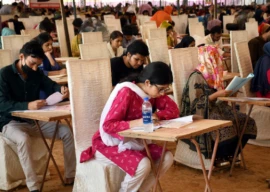
The share of value-added products in Pakistan’s textile exports has remained almost the same over the last 10 years, with the combined overseas sales of woven and knitted garments contributing 29.2% in the total textile exports of $12.3 billion in fiscal year 2012, virtually unchanged from the 29% it was in 2002.
While Pakistan’s exports in the textile sector grew at an annual rate of 7.6% between 2002 and 2012, the share of value-added textiles – i.e. knitted and woven garments – also rose at a similar rate of 7.7% per annum over the same period.
“The share of value-added goods in total textile exports should’ve been much bigger. Value-addition fetches more foreign exchange, adds new jobs at home, and the exporter gets 10 times higher margins on goods sold,” said Pakistan Readymade Garments Manufacturers and Exporters Association Zonal Chairman Atiq A Kochra.
On the contrary, the share of raw cotton in total textile exports has risen phenomenally in the past decade. Pakistan exported cotton of $24.7 million in 2002. Ten years on, the worth of cotton Pakistan sold overseas had risen to $462 million, a tremendous rise of 34% per year between 2002 and 2012.
“We’ve indeed become a raw-material supplying nation, which is deplorable. It’s a sheer waste of resource,” Kochra said. “One of the reasons we shy away from value addition is that it requires continuous research, development and hard work.”
However, the share of raw cotton in overall exports of textiles is still the smallest among all other sectors. Revenues generated from the sale of raw cotton to foreign buyers were only 3.7% of the total textile export income in 2012.
While revenues have increased consistently over the years, the quantity of readymade garments exported declined significantly last year. About 3.9 million dozen garment pieces were exported in June 2011 as opposed to 2.7 million dozen pieces in June 2012, signifying a drop of 30%.
“The mere fact that value-added products have maintained their share in total exports in terms of revenue is no mean feat,” Kochra said. “We can’t sell a product unless we show it to the customer because of its complicated nature. But foreign customers are not willing to come to Pakistan now, which has increased our cost of doing business.”
The contribution of cloth, bed linen and yarn in the total textile exports of 2012 was 19.9%, 14.2% and 14.9%, respectively. Just like the garments sector, the share of each of these categories has stayed almost constant over the last 10 years.
Talking to The Express Tribune, Karachi Cotton Association Chairman Sohail Naseem said he agreed with the idea that the country’s raw materials should preferably be used in manufacturing exportable value-added goods. However, growers should get the fair market price, he says, adding that the real blame for the export of raw cotton lies with garment manufacturers, who are unwilling to pay international market prices.
“There’s no duty on import or export of cotton. Why don’t garment manufacturers import it if they think we’re acting unreasonably? The fact is they’re unwilling to pay market-determined prices,” he said.
Cotton production in 2012 stood at 14.8 million bales, which is 35% higher than the total output of 10.9 million bales recorded in 2002. “With such an increase in the production over just 10 years, who do you think we should take our product to if local buyers are simply unwilling to pay the market price?”
Published in The Express Tribune, August 27th, 2012.









1730379446-0/WhatsApp-Image-2024-10-31-at-17-56-13-(1)1730379446-0-270x192.webp)

1735025557-0/Untitled-(96)1735025557-0-270x192.webp)











COMMENTS
Comments are moderated and generally will be posted if they are on-topic and not abusive.
For more information, please see our Comments FAQ